The Good
- Decent looks
- Great value
- Fun to drive
The Bad
- V6 sounds a lot better
- Less smooth than the GT S
Struggling to justify the Kia Stinger’s 3.3-litre V6 GT S? The Stinger T-GDi 2.0-litre four-cylinder could be the solution. We drove it around Marlow in snowy conditions to see what’s what.
Compromise is an awful word and it is the reason why some people work hard to ensure they never really have to succumb to it. But sadly most of us never became billionaire astronauts or whatever else you dreamed of being as a child, making it as inevitable as aging.
There are, however, times when compromise can work out for the best – particularly when it comes to cars. But can the Kia Stinger T-GDi and its 2.0-litre four-cylinder match the might of the 3.3-litre V6 of the GT S in ways other than straight-line speed and how does it stack up against the Audi A5 Sportback and BMW 4 Series Gran Coupe?
In the interest of finding out, we braved the snow while cruising around the area of Marlow in Buckinghamshire.
Kia Stinger T-GDi review: What is it?
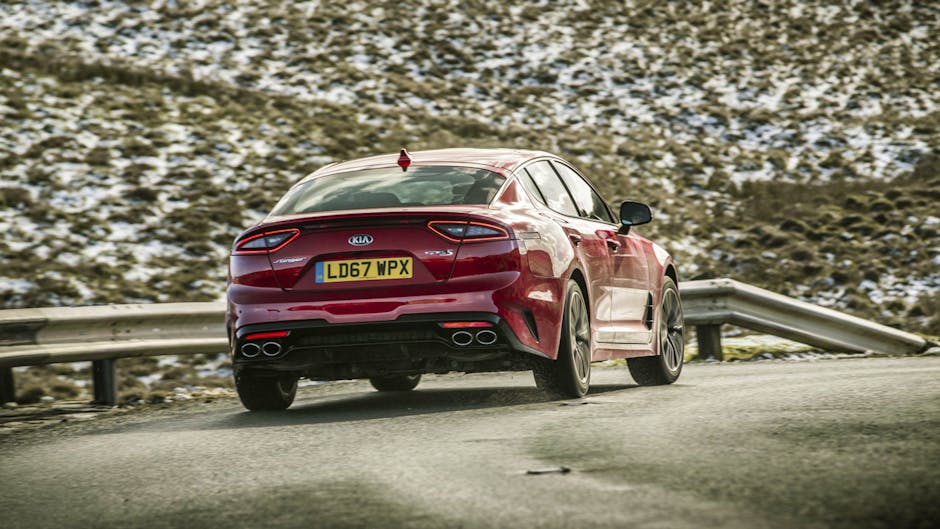
The Kia Stinger is the South Korean manufacturer’s attempt at making itself more appealing. It was actually designed with gran turismo cars of old in mind, which is why it has a long bonnet, long wheelbase and short overhangs.
Former BMW M division head, Albert Biermann, was brought in to make the Stinger (and Hyundai i30 N) more than just a pipe dream, while Hyundai-Kia design chief Peter Schreyer worked on giving it an appealing exterior.
Originally unveiled as the GT Concept back in 2011, the production Stinger measures 4,830mm long, 1,870mm wide, 1,400mm tall and has a wheelbase of 2,905mm. This, then, is a big car that ultimately sets out to do comfort better than sporty, but without being lifeless.
You can have the Stinger with one of three engines, including the aforementioned 365bhp twin-turbo 3.3-litre V6 and the 197bhp 2.2-litre CRDi diesel. As for specs, the base is GT-Line, then you have GT-Line S in the middle and GT S at the top although this is for the V6 only.
Prices start from £31,995 for a Stinger 2.0 T-GDi GT-Line, £3,500 less than the GT-Line S. A Stinger GT S, meanwhile, will set you back at least £40,495 – a premium of £8,500 over the cheapest Stinger.
Kia Stinger T-GDi review: How does it drive?
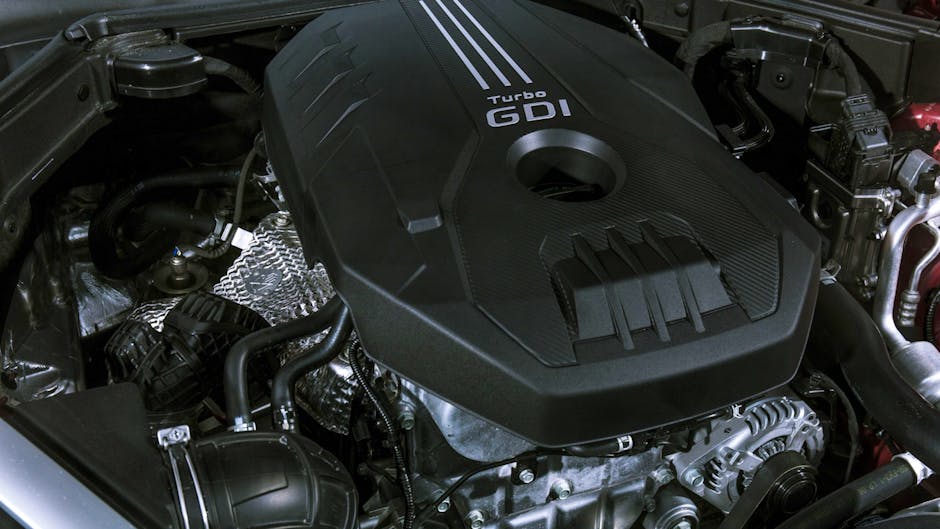
In losing some weight but only 1.1 seconds from 0-62mph, the 2.0-litre four-cylinder comes across as lighter, more eager and more agile than the GT S. Where you need to be somewhat delicate with the throttle and steering in the V6, the T-GDi lets you chuck it around like an idiot and live to tell the tale. It keeps you to more sensible speeds, where the GT S reaches licence-losing territory all-too easily.
The steering is a tad numb but it comes across as nicely weighted and intuitive, while the balance of the car, capable brakes (but not Brembos) and minor body roll all ensure your progress is never hampered. You can certainly have a riot on twisty roads, certainly more so than in the muted Audi S5 Sportback.
This is especially true when you consider that four-cylinder engine, though less interesting to listen to than we hoped, rewards being pushed to higher revs. Not that it lacks decent low to mid-range grunt, of course, but eking out the revs greatly increases the drama.
Jumping down to the Stinger T-GDi and 2.2 CRDi means losing the V6’s adjustable electronic suspension, which results in a less smooth and more jittery ride – particularly at low speeds. Here, the smaller-engined Stingers come across as less luxurious and more sporty, although some may view that as a good thing.
In other areas, the refinement is hard to fault. Its eight-speed automatic changes up the gears so smoothly you can forget its there, although some downshifts are a little clunky.
Be gentle with the accelerator and the engine settles down to barely a whimper, with road and wind noise both palatable.
Eco and Comfort really relax the way the Stinger T-GDi behaves, with Sport making it noticeably more lively. Sport+ serves as a way of enjoying less intervention from the electronic stability control system, but it still takes some effort to make the sizable Continental tyres lose grip. You are more likely to find understeer than oversteer given the hefty kerb weight.
Kia Stinger T-GDi review: Value for money and practicality?
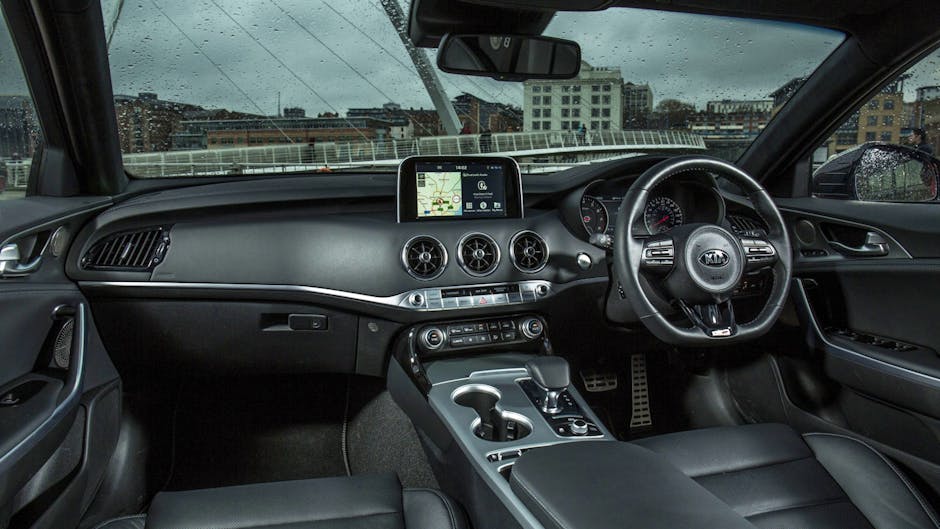
With prices starting from £31,995 for the Stinger T-GDi, you do get a lot of car for your money. Not only is it capable of seating two six-footers in the back, thanks to larger dimensions than its competitors, it also has more power and decent levels of technology although its infotainment system lags behind that of Audi, BMW and Mercedes.
You would need to go for the 248bhp Audi A5 Sportback 2.0-litre TFSI for similar power, but that engine is only available on the top-spec S line, which means spending £42,010 before extras – 365bhp Stinger GT S territory, basically. Not only that, its 0-62mph time of six seconds is down three-tenths on the Stinger, although the top speed is 155mph (up six mph) and overall luxury and refinement is better. Even the 187bhp model starts from £33,535, highlighting the bang for your buck you get in going for the South Korean alternative.
The BMW 4 Series Gran Coupe, meanwhile, is also drastically more expensive. For similar levels of go, you would need to spend at least £39,030 on the 430i M Sport Gran Coupe and it would still be slower, plus the option of an automatic costs another £1,390. It is, however, a little more powerful, considerably better on CO2 emissions (136 versus the Stinger T-GDi’s 181g/km) and rides more smoothly.
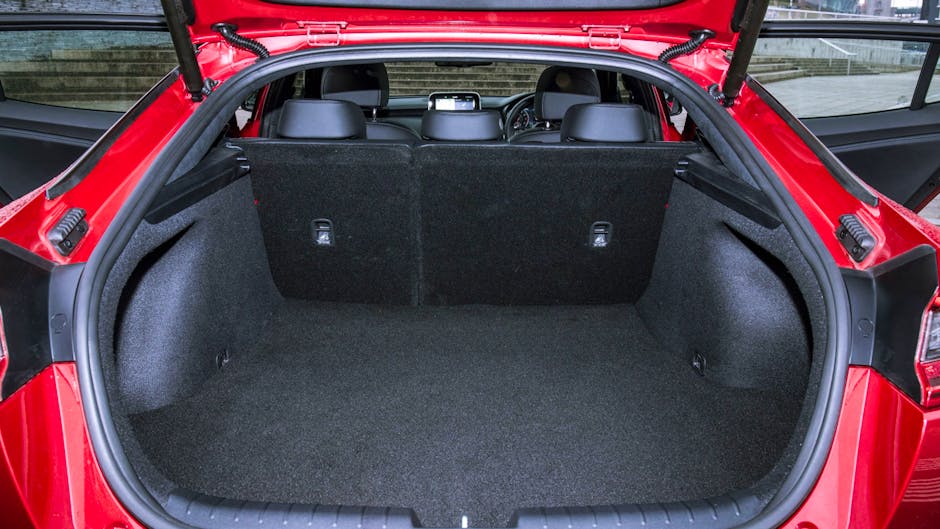
If emissions and fuel economy matters, the Stinger T-GDi is more eco-friendly than the GT S in both CO2 (225g/km) and fuel economy (28.5mpg). We struggled to reach the claimed 35.8mpg, but then that was more the fault of wanting to drive fast, not efficiently.
As for practicality, the middle seat is a bit of a no-go for tall people because of its cramped proportions but elsewhere space is generous and there are various neat touches and storage areas to accommodate daily life. The boot offers 405 litres, which makes it usable although the rival Audi and BMW have have an extra 75 litres.
Overall cabin quality is good, too, with panel gaps and sturdiness all scoring highly. We particularly like the TT RS-inspired air vents, which are easy to use and make it easy to pinpoint where you want air to flow, and the adjustability of the seats and steering that makes sitting how you want a painless task.
Kia Stinger T-GDi review: Should I buy one, then?
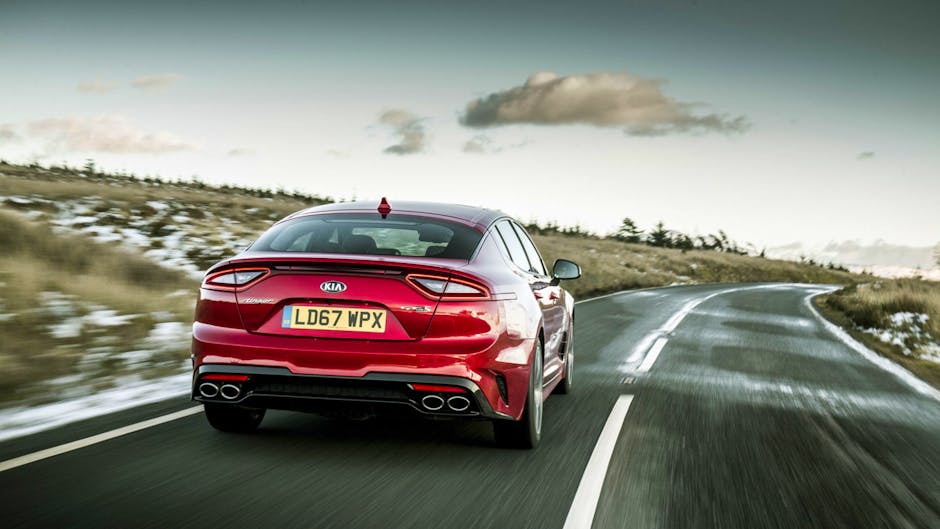
Even the most basic Kia Stinger is well-specced, looks the part (ignoring the odd iffy chrome detail) and is much easier on your wallet than its competitors.
It also comes with a seven-year, 100,000-mile warranty, which should help alleviate a lack of badge desirability if such a thing bothers you.
Honestly, the T-GDi is the sweet spot in the range when it comes to price, efficiency and performance. Not only is it comfortable and refined most of the time, it offers a much livelier drive than its Germanic rivals and without being that much less economical.
We did find ourselves missing the old-school brutality of the V6 GT S somewhat, admittedly, but never quite enough to make spending the £8,500 price difference hugely tempting.
Specification
| Engine | 2.0-litre four-cylinder petrol |
|---|---|
| Power | 244bhp at 6,200rpm |
| Torque | 260lb/ft (353Nm) at 1,400-3,500rpm |
| Acceleration | 0-62mph in 5.8 seconds |
| Top speed | 149mph |
| Emissions | 181g/km of CO2 |
| Economy | 35.8mpg (combined) |
| Kerb weight | 1,717 to 1,833kg |
| Price | From £31,995 |
Leave a Reply